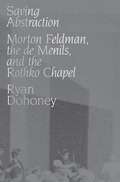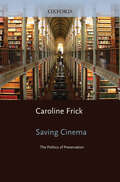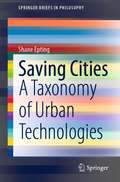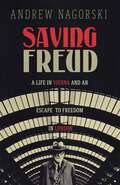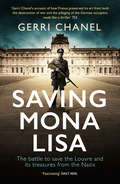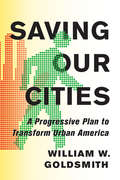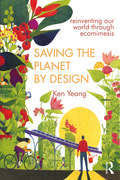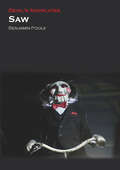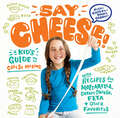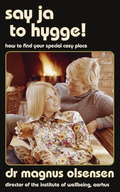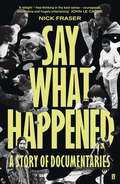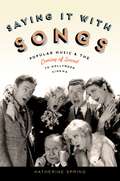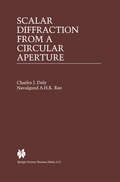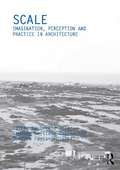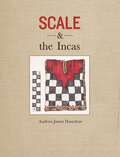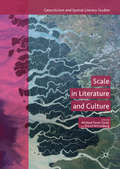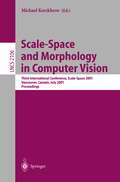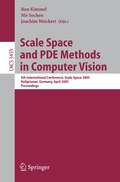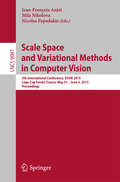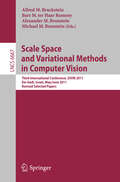- Table View
- List View
Saving Abstraction: Morton Feldman, the de Menils, and the Rothko Chapel
by Ryan DohoneySaving Abstraction: Morton Feldman, the de Menils, and the Rothko Chapel tells the story of the 1972 premier of Morton Feldman's music for the Rothko Chapel in Houston. Built in 1971 for "people of all faiths or none," the chapel houses 14 monumental paintings by famed abstract expressionist Mark Rothko, who had committed suicide only one year earlier. Upon its opening, visitors' responses to the chapel ranged from spiritual succor to abject tragedy--the latter being closest to Rothko's intentions. However the chapel's founders--art collectors and philanthropists Dominique and John de Menil--opened the space to provide an ecumenically and spiritually affirming environment that spoke to their avant-garde approach to Catholicism. A year after the chapel opened, Morton Feldman's musical work Rothko Chapel proved essential to correcting the unintentionally grave atmosphere of the de Menil's chapel, translating Rothko's existential dread into sacred ecumenism for visitors. Author Ryan Dohoney reconstructs the network of artists, musicians, and patrons who collaborated on the premier of Feldman's music for the space, and documents the ways collaborators struggled over fundamental questions about the emotional efficacy of art and its potential translation into religious feeling. Rather than frame the debate as a conflict of art versus religion, Dohoney argues that the popular claim of modernism's autonomy from religion has been overstated and that the two have been continually intertwined in an agonistic tension that animates many 20th-century artistic collaborations.
Saving Cinema: The Politics of Preservation
by Caroline FrickThe importance of media preservation has in recent years achieved much broader public recognition. From the vaults of Hollywood and the halls of Congress to the cash-strapped museums of developing nations, people are working to safeguard film from physical harm. But the forces at work aren't just physical. The endeavor is also inherently political. What gets saved and why? What remains ignored? Who makes these decisions, and what criteria do they use? Saving Cinema narrates the development of the preservation movement and lays bare the factors that have influenced its direction. Archivists do more than preserve movie history; they actively produce and codify cinematic heritage. At the same time, digital technologies have produced an entirely new reality, one that resists the material, artifact-driven approach that is the gold standard of preservation in the Western world. As it has become increasingly easy to capture and access moving images, increasing evidence of something many archivists have known for years has emerged: industrial and training films, amateur travel diaries, and even family videos are critical public resources. It has also raised question about the role of the profession. Is access equivalent to preservation, and, if it is, how should archivists alter their activities? The time is ripe for a reconsideration of the politics and practices of preservation. Saving Cinema is the book to guide that conversation.
Saving Cinema: The Politics of Preservation
by Caroline FrickThe importance of media preservation has in recent years achieved much broader public recognition. From the vaults of Hollywood and the halls of Congress to the cash-strapped museums of developing nations, people are working to safeguard film from physical harm. But the forces at work aren't just physical. The endeavor is also inherently political. What gets saved and why? What remains ignored? Who makes these decisions, and what criteria do they use? Saving Cinema narrates the development of the preservation movement and lays bare the factors that have influenced its direction. Archivists do more than preserve movie history; they actively produce and codify cinematic heritage. At the same time, digital technologies have produced an entirely new reality, one that resists the material, artifact-driven approach that is the gold standard of preservation in the Western world. As it has become increasingly easy to capture and access moving images, increasing evidence of something many archivists have known for years has emerged: industrial and training films, amateur travel diaries, and even family videos are critical public resources. It has also raised question about the role of the profession. Is access equivalent to preservation, and, if it is, how should archivists alter their activities? The time is ripe for a reconsideration of the politics and practices of preservation. Saving Cinema is the book to guide that conversation.
Saving Cities: A Taxonomy of Urban Technologies (SpringerBriefs in Philosophy)
by Shane EptingThis book makes the case that several urban technologies contribute to wicked problems such as climate change and vast social and economic inequalities. Such situations often create unfavorable conditions for mental life in cities. These conditions force us to expand the taxonomy of technology to include new designations: “wicked” and “saving” technologies. Epting holds that the latter can support worthwhile goals such as socially just urban sustainability. Along with fleshing out this view, he provides concrete examples of saving technologies, which include cohousing initiatives, ariel cable cars, participatory budgeting, and car-free zones/cities.
Saving Freud: A Life in Vienna and an Escape to Freedom in London
by Andrew Nagorski'Astonishing... In the American journalist Andrew Nagorski this tale has found its ideal narrator'SEBASTIAN FAULKS, Sunday Times'A gripping masterpiece'BRETT KAHR, Freud Museum LondonMarch 1938: German soldiers are massing on the Austrian border, on the cusp of fulfilling Hitler's dream of absorbing the country into the Third Reich. Many Jews make frantic plans to flee to safety. But one of the most famous men in the world, unable to contemplate leaving his beloved Vienna, is not among them. His name is Sigmund Freud.Saving Freud is the story of a great man's life, and of the extraordinary people who managed to prolong it, by convincing him to escape to London: the Welsh physician who brought psychoanalysis to Britain; Napoleon's great-grandniece; an American ambassador; Freud's devoted daughter, Anna; and the doctor who risked his own life by staying at Freud's side.In examining the histories of both Freud and his closest circle, Andrew Nagorski brilliantly evokes the story of Europe in the first half of the Twentieth Century. This is a tale of a great city, a collapsing empire, a rising terror -and of a man who would change the way we think.
Saving Mona Lisa: The Battle to Protect the Louvre and its Treasures from the Nazis
by Gerri ChanelIn August 1939, curators at the Louvre nestled the world’s most famous painting into a special red velvet-lined case and spirited her away to the Loire Valley as part of the biggest museum evacuation in history. As the Germans neared Paris in 1940, the French raced to move the masterpieces still further south, then again and again during the war, crisscrossing the southwest of France. Throughout the German occupation, the museum staff fought to keep the priceless treasures out of the hands of Hitler and his henchmen, often risking their lives to protect the country's artistic heritage. Saving Mona Lisa is the sweeping, suspenseful narrative of their struggle.
Saving Our Cities: A Progressive Plan to Transform Urban America
by William W. GoldsmithIn Saving Our Cities, William W. Goldsmith shows how cities can be places of opportunity rather than places with problems. With strongly revived cities and suburbs, working as places that serve all their residents, metropolitan areas will thrive, thus making the national economy more productive, the environment better protected, the citizenry better educated, and the society more reflective, sensitive, and humane. Goldsmith argues that America has been in the habit of abusing its cities and their poorest suburbs, which are always the first to be blamed for society’s ills and the last to be helped. As federal and state budgets, regulations, and programs line up with the interests of giant corporations and privileged citizens, they impose austerity on cities, shortchange public schools, make it hard to get nutritious food, and inflict the drug war on unlucky neighborhoods. Frustration with inequality is spreading. Parents and teachers call persistently for improvements in public schooling, and education experiments abound. Nutrition indicators have begun to improve, as rising health costs and epidemic obesity have led to widespread attention to food. The futility of the drug war and the high costs of unwarranted, unprecedented prison growth have become clear. Goldsmith documents a positive development: progressive politicians in many cities and some states are proposing far-reaching improvements, supported by advocacy groups that form powerful voting blocs, ensuring that Congress takes notice. When more cities forcefully demand enlightened federal and state action on these four interrelated problems—inequality, schools, food, and the drug war—positive movement will occur in traditional urban planning as well, so as to meet the needs of most residents for improved housing, better transportation, and enhanced public spaces.
Saving The Planet By Design: Reinventing Our World Through Ecomimesis
by Ken YeangCan we ‘save the Planet’? For a resilient, durable and sustainable future for human society, we need to repurpose, reinvent, redesign, remake and recover our human-made world so that our built environment is benignly and seamlessly biointegrated with Nature to function synergistically with it. These are the multiple tasks that humanity must carry out imminently if there is to be a future for human society and all lifeforms and their environments on the Planet. Addressing this is the most compelling question for those whose daily work impacts on Nature, such as architects, engineers, landscape architects, town planners, environmental policy makers, builders and others, but it is a question that all of humanity needs to urgently address. Presented here are two key principles as the means to carry out these tasks – ‘ecocentricity’ being guided by the science of ecology, and ‘ecomimesis’ as designing and making the built environment including all artefacts based on the emulation and replication of the ‘ecosystem’ concept. Designing with ecology is contended here as the authentic approach to green design from which the next generation of green design will emerge, going beyond current use of accreditation systems. For those who subscribe to this principle, this is articulated here, showing how it can be implemented by design. Adopting these principles is fundamental in our endeavour to save our Planet Earth, and changes profoundly and in entirety the way we design, make, manage and operate our built environment.
Saving The Planet By Design: Reinventing Our World Through Ecomimesis
by Ken YeangCan we ‘save the Planet’? For a resilient, durable and sustainable future for human society, we need to repurpose, reinvent, redesign, remake and recover our human-made world so that our built environment is benignly and seamlessly biointegrated with Nature to function synergistically with it. These are the multiple tasks that humanity must carry out imminently if there is to be a future for human society and all lifeforms and their environments on the Planet. Addressing this is the most compelling question for those whose daily work impacts on Nature, such as architects, engineers, landscape architects, town planners, environmental policy makers, builders and others, but it is a question that all of humanity needs to urgently address. Presented here are two key principles as the means to carry out these tasks – ‘ecocentricity’ being guided by the science of ecology, and ‘ecomimesis’ as designing and making the built environment including all artefacts based on the emulation and replication of the ‘ecosystem’ concept. Designing with ecology is contended here as the authentic approach to green design from which the next generation of green design will emerge, going beyond current use of accreditation systems. For those who subscribe to this principle, this is articulated here, showing how it can be implemented by design. Adopting these principles is fundamental in our endeavour to save our Planet Earth, and changes profoundly and in entirety the way we design, make, manage and operate our built environment.
SAW (Devil's Advocates)
by Ben PooleLike all game changers within the horror genre, SAW was an independent success, a low-budget champion that flourished without the patronage of a big studio. Not bad for the most successful horror franchise ever, which has spawned subsidiary media and masses of merchandise, including a theme park rollercoaster ride. What is it about SAW that attracted such a following? In his contribution to the "Devil's Advocates" series, Ben Poole considers the SAW phenomenon from all aspects of film and media studies – from its generic pedigree in both literature and film, to the visceral audience pleasures ("what would I do?") of the text, to the contrasting representations of men and women and the film's implicit criticism of masculinity.
SAW (Devil's Advocates)
by Ben PooleLike all game changers within the horror genre, SAW was an independent success, a low-budget champion that flourished without the patronage of a big studio. Not bad for the most successful horror franchise ever, which has spawned subsidiary media and masses of merchandise, including a theme park rollercoaster ride. What is it about SAW that attracted such a following? In his contribution to the "Devil's Advocates" series, Ben Poole considers the SAW phenomenon from all aspects of film and media studies – from its generic pedigree in both literature and film, to the visceral audience pleasures ("what would I do?") of the text, to the contrasting representations of men and women and the film's implicit criticism of masculinity.
Say Cheese!: A Kid's Guide to Cheese Making with Recipes for Mozzarella, Cream Cheese, Feta & Other Favorites
by Ricki Carroll Sarah CarrollKids will find making cheese easy and fun with these 12 step-by-step recipes for favorite soft cheeses that can be made in the home kitchen in just a couple hours. An additional 10 recipes feature cheese-centric dishes kids love.
Say Ja to Hygge!: A parody: How to find your special cosy place
by Dr Magnus OlsensenHilarious tongue-in-cheek guide to the Danish "hygge" lifestyle.This book came about after a particularly hyggelig evening in December 2015. I had just lit my pleasing contemporary wood-burner and was sitting back, gløgg in hand, listening to Terj Dørk's classic drøn jazz album "Tepid in Taarstrup'. I found myself reflecting on the fact that we are the World's Happiest People™. Wasn't it time, I thought, we shared our secret? I immediately called around three of the Institute of Wellbeing's brightest young researchers: Freja, Olaf and Sofia. We sat together snug in my pure wool 'foursie', bathed on soft fire-light, and talked long into the evening. The idea came over us unexpectedly. We would publish a book, explaining hygge for the betterment of all mankind. I'm delighted that we have succeeded. And I hope our efforts will help you to find your own hygge-topia. Held og lykke!"Dr Magnus OlsensenDirector, Institute of Wellbeing, Aarhus***The Danish "hygge" (pronounced 'huhhpg-ghuhrr') lifestyle is all about feeling snug, gentle, warm and satisfied - ideally, self-satisfied.But how should you go about finding your special cosy place?Let Dr Magnus Olsensen be your hilarious guide to finding hygge in every area of your life - from the office to the bedroom. Hygge is derived from the Old Norse words hig, meaning cosy, and ger, meaning fire hazard. It is, in essence, a state of mind. (One that is heavily dependent on candles.) For some, achieving hygge will come easily. Others may have to work a little harder. But if you put in the hours - and follow the guidance in Say Ja to Hygge! - you will find your own hygge-topia. You will have become, in spirit, Danish. And - as the old song goes - there is nothing like a Dane!This truly hilarious send-up of hygge culture is a work of timely comic genius.
Say What Happened: A Story of Documentaries
by Nick FraserDocumentary films are the rock and roll of our times. Why are they made? Who are in the tribe of documentary film-makers? Do their films really change the world? Eighteen years ago, Nick Fraser created BBC Storyville, producing films that won Oscars, BAFTAs, and Peabody Awards. He found film-makers from all across the world covering important subjects in documentaries. In Say What Happened he describes the frenzied, intense world of documentary film-making, tracing its history back to the early pioneers, such as Dziga Vertov and his ground-breaking Man with a Movie Camera. The book deals with the British documentary tradition founded by John Grierson, and discusses the work of American masters such as the Maysles brothers, Frederick Wiseman and D.A. Pennebaker, as well as Europeans such as Marcel Ophuls, Claude Lanzmann, Chris Marker, and Werner Herzog. He interviews acclaimed documentary film-makers and discusses the work of Ken Burns, Errol Morris, and Joshua Oppenheimer, among others across the globe, as well as listing his top one-hundred documentaries, and where readers can watch them.In a world beset with 'fake news', he argues documentaries are better at getting at the verities about life and death and that the new journalism will come from films made using new technology.
Saying It With Songs: Popular Music and the Coming of Sound to Hollywood Cinema (Oxford Music / Media)
by Katherine SpringHollywood's conversion from silent to synchronized sound film production not only instigated the convergence of the film and music industries but also gave rise to an extraordinary period of songs in American cinema. Saying It With Songs considers how the increasing interdependence of Hollywood studios and Tin Pan Alley music publishing firms influenced the commercial and narrative functions of popular songs. While most scholarship on film music of the period focuses on adaptations of Broadway musicals, this book examines the functions of songs in a variety of non-musical genres, including melodramas, romantic comedies, Westerns, prison dramas, and action-adventure films, and shows how filmmakers tested and refined their approach to songs in order to reconcile the spectacle of song performance, the classical norms of storytelling, and the conventions of background orchestral scoring from the period of silent cinema. Written for film and music scholars alike as well as for general readers, Saying It With Songs illuminates the origins of the popular song score aesthetic of American cinema.
Scalar Diffraction from a Circular Aperture (The Springer International Series in Engineering and Computer Science #549)
by Charles J. Daly Navalgund A.H.K. RaoScalar diffraction from a circular aperture is a ubiquitous problem that arises in a variety of disciplines, such as optics (lenses), acoustics (speakers), electromagnetics (dish antennas), and ultrasonics (piston transducers). The problem endures despite centuries of research because each new generation of researchers rediscovers it and adds some novel insight or new result to the existing literature. Scalar Diffraction from a Circular Aperture promises a few new results and several novel insights, particularly with regard to spatial averaging. Although the text emphasizes ultrasonic diffraction, the results and insights developed are general and may be applied to the many practical problems involving scalar diffraction from a circular aperture. Included are novel insights on mirror-image diffraction, autoconvolution diffraction, and coherent and incoherent averaging. Examples from ultrasonic imaging, a coherent imaging modality, are used to develop a fairly general theory that connects over a century of research on scalar diffraction from a circular aperture. The material is based on a synthesis of mathematics, physical optics, linear systems theory, and scalar diffraction theory. Thus, engineers, scientists, mathematicians, and students working in optics, acoustics, antenna design, biomedical engineering, non-destructive testing, and astronomy will find Scalar Diffraction from a Circular Aperture interesting, provocative, and useful.
Scale: Imagination, Perception and Practice in Architecture
by Gerald Adler Timothy Brittain-Catlin Gordana Fontana-GiustiScale is a word which underlies much of architectural and urban design practice, its history and theory, and its technology. Its connotations have traditionally been linked with the humanities, in the sense of relating to human societies and to human form. ‘To build in scale’ is an aspiration that is usually taken for granted by most of those involved in architectural production, as well as by members of the public; yet in a world where value systems of all kinds are being questioned, the term has come under renewed scrutiny. The older, more particular, meanings in the humanities, pertaining to classical Western culture, are where the sense of scale often resides in cultural production. Scale may be traced back, ultimately, to the discovery of musical harmonies, and in the arithmetic proportional relationship of the building to its parts. One might question the continued relevance of this understanding of scale in the global world of today. What, in other words, is culturally specific about scale? And what does scale mean in a world where an intuitive, visual understanding is often undermined or superseded by other senses, or by hyper-reality? Structured thematically in three parts, this book addresses various issues of scale. The book includes an introduction which sets the scene in terms of current architectural discourse and also contains a visual essay in each section. It is of interest to undergraduate and postgraduate students, academics and practitioners in architecture and architectural theory as well as to students in a range of other disciplines including art history and theory, geography, anthropology and landscape architecture.
Scale: Imagination, Perception and Practice in Architecture
by Gerald Adler Timothy Brittain-Catlin Gordana Fontana-GiustiScale is a word which underlies much of architectural and urban design practice, its history and theory, and its technology. Its connotations have traditionally been linked with the humanities, in the sense of relating to human societies and to human form. ‘To build in scale’ is an aspiration that is usually taken for granted by most of those involved in architectural production, as well as by members of the public; yet in a world where value systems of all kinds are being questioned, the term has come under renewed scrutiny. The older, more particular, meanings in the humanities, pertaining to classical Western culture, are where the sense of scale often resides in cultural production. Scale may be traced back, ultimately, to the discovery of musical harmonies, and in the arithmetic proportional relationship of the building to its parts. One might question the continued relevance of this understanding of scale in the global world of today. What, in other words, is culturally specific about scale? And what does scale mean in a world where an intuitive, visual understanding is often undermined or superseded by other senses, or by hyper-reality? Structured thematically in three parts, this book addresses various issues of scale. The book includes an introduction which sets the scene in terms of current architectural discourse and also contains a visual essay in each section. It is of interest to undergraduate and postgraduate students, academics and practitioners in architecture and architectural theory as well as to students in a range of other disciplines including art history and theory, geography, anthropology and landscape architecture.
Scale and the Incas
by Andrew HamiltonA groundbreaking work on how the topic of scale provides an entirely new understanding of Inca material cultureAlthough questions of form and style are fundamental to art history, the issue of scale has been surprisingly neglected. Yet, scale and scaled relationships are essential to the visual cultures of many societies from around the world, especially in the Andes. In Scale and the Incas, Andrew Hamilton presents a groundbreaking theoretical framework for analyzing scale, and then applies this approach to Inca art, architecture, and belief systems. The Incas were one of humanity's great civilizations, but their lack of a written language has prevented widespread appreciation of their sophisticated intellectual tradition. Expansive in scope, this book examines many famous works of Inca art including Machu Picchu and the Dumbarton Oaks tunic, more enigmatic artifacts like the Sayhuite Stone and Capacocha offerings, and a range of relatively unknown objects in diverse media including fiber, wood, feathers, stone, and metalwork. Ultimately, Hamilton demonstrates how the Incas used scale as an effective mode of expression in their vast multilingual and multiethnic empire.Lavishly illustrated with stunning color plates created by the author, the book's pages depict artifacts alongside scale markers and silhouettes of hands and bodies, allowing readers to gauge scale in multiple ways. The pioneering visual and theoretical arguments of Scale andthe Incas not only rewrite understandings of Inca art, but also provide a benchmark for future studies of scale in art from other cultures.
Scale in Literature and Culture
by Michael Tavel Clarke David WittenbergThis collection emphasizes a cross-disciplinary approach to the problem of scale, with essays ranging in subject matter from literature to film, architecture, the plastic arts, philosophy, and scientific and political writing. Its contributors consider a variety of issues provoked by the sudden and pressing shifts in scale brought on by globalization and the era of the Anthropocene, including: the difficulties of defining the concept of scale; the challenges that shifts in scale pose to knowledge formation; the role of scale in mediating individual subjectivity and agency; the barriers to understanding objects existing in scalar realms different from our own; the role of scale in mediating the relationship between humans and the environment; and the nature of power, authority, and democracy at different social scales.
Scale in Literature and Culture
by Michael Tavel Clarke David WittenbergThis collection emphasizes a cross-disciplinary approach to the problem of scale, with essays ranging in subject matter from literature to film, architecture, the plastic arts, philosophy, and scientific and political writing. Its contributors consider a variety of issues provoked by the sudden and pressing shifts in scale brought on by globalization and the era of the Anthropocene, including: the difficulties of defining the concept of scale; the challenges that shifts in scale pose to knowledge formation; the role of scale in mediating individual subjectivity and agency; the barriers to understanding objects existing in scalar realms different from our own; the role of scale in mediating the relationship between humans and the environment; and the nature of power, authority, and democracy at different social scales.
Scale-Space and Morphology in Computer Vision: Third International Conference, Scale-Space 2001, Vancouver, Canada, July 7-8, 2001. Proceedings (Lecture Notes in Computer Science #2106)
by Michael KerckhoveThis book constitutes the refereed proceedings of the Third International Conference on Scale-Space and Morphology in Computer Vision, Scale-Space 2001, held in Vancouver, Canada in July 2001.The 18 revised full papers presented together with 23 posters were carefully reviewed and selected from 60 submissions. The book addresses all current aspects of scale-space and morphology in the context of computer vision, in particular, vector distance functions, optic flow, image registration, curve evolution, morphological segmentation, scalar images, vector images, automatic scale selection, geometric diffusion, diffusion filtering, image filtering, inverse problems, active contours, etc.
Scale Space and PDE Methods in Computer Vision: 5th International Conference, Scale-Space 2005, Hofgeismar, Germany, April 7-9, 2005, Proceedings (Lecture Notes in Computer Science #3459)
by Ron Kimmel Nir Sochen Joachim WeickertWelcome to the proceedings of the 5th International Conference on Scale-Space and PDE Methods in Computer Vision. The scale-space concept was introduced by Iijima more than 40 years ago and became popular later on through the works of Witkin and Koenderink. It is at the junction of three major schools of thought in image processing and computer vision: the design of ?lters, axiomatic approaches based on partial di?erential equations (PDEs), and variational methods for image regularization. Scale-space ideas belong to the mathematically best-understood approaches in image analysis. They have entered numerous successful applications in medical imaging and a number of other ?elds where they often give results of very high quality. This conference followed biennial meetings held in Utrecht, Corfu, Vancouver and Skye. It took place in a little castle (Schl¨ osschen Sch¨ onburg) near the small town of Hofgeismar, Germany. Inspired by the very successful previous meeting at Skye, we kept the style of gathering people in a slightly remote and scenic place in order to encourage many fruitful discussions during the day and in the evening. Wereceived79fullpapersubmissionsofahighstandardthatischaracteristic for the scale-space conferences. Each paper was reviewed by three experts from the Program Committee, sometimes helped by additional reviewers. Based on theresultsofthesereviews,53paperswereaccepted.Weselected24manuscripts for oral presentation and 29 for poster presentation.
Scale Space and Variational Methods in Computer Vision: 5th International Conference, SSVM 2015, Lège-Cap Ferret, France, May 31 - June 4, 2015, Proceedings (Lecture Notes in Computer Science #9087)
by Jean-François Aujol Mila Nikolova Nicolas PapadakisThis book constitutes the refereed proceedings of the 5th International Conference on Scale Space and Variational Methods in Computer Vision, SSVM 2015, held in Lège-Cap Ferret, France, in May 2015. The 56 revised full papers presented were carefully reviewed and selected from 83 submissions. The papers are organized in the following topical sections: scale space and partial differential equation methods; denoising, restoration and reconstruction, segmentation and partitioning; flow, motion and registration; photography, texture and color processing; shape, surface and 3D problems; and optimization theory and methods in imaging.
Scale Space and Variational Methods in Computer Vision: Third International Conference, SSVM 2011, Ein-Gedi, Israel, May 29 -- June 2, 2011, Revised Selected Papers (Lecture Notes in Computer Science #6667)
by Michael M. Bronstein Alfred M. Bruckstein Bart M. Ter Haar Romeny Alexander M. BronsteinThis book constitutes the thoroughly refereed post-conference proceedings of the Third International Conference on Scale Space Methods and Variational Methods in Computer Vision, SSVM 2011, held in Ein-Gedi, Israel in May/June 2011. The 24 revised full papers presented together with 44 poster papers were carefully reviewed and selected from 78 submissions. The papers are organized in topical sections on denoising and enhancement, segmentation, image representation and invariants, shape analysis, and optical flow.
